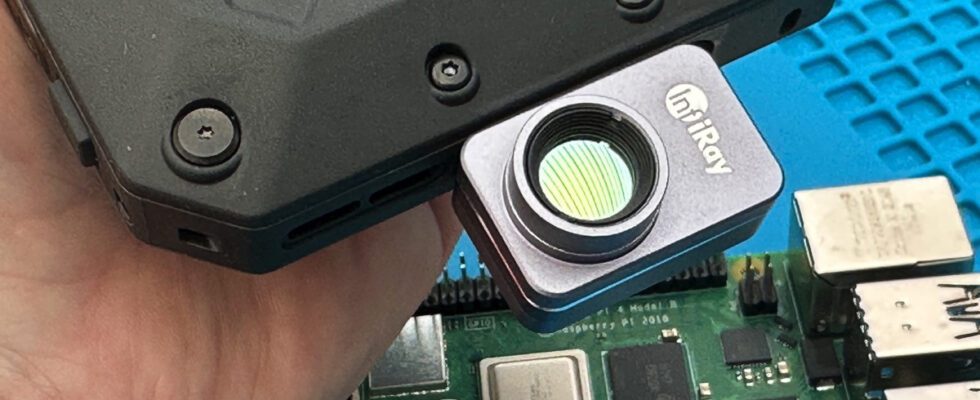I’m a big fan of Android smartphones that incorporate thermal cameras, like the awesome Ulefone Power Armor 18T.
But I also understand that some people don’t want to change their smartphone at all to have access to just this function, as superb as it is.
The solution in this case is to buy this tool: the InfiRay P2 Pro.
Technical specifications of the InfiRay P2 Pro
- IR image definition: 256×192
- Measurement temperature range: -20°C to 550°C ± 2°C
- Dimensions: 27mm×18mm×9.8mm
- Weight : 9g
- Battery-less design
- OS compatibility: Android 9.0 and later
- Interface: USB-C
The InfiRay P2 Pro consists of a tiny thermal camera and a magnetically attached macro lens that allows it to get very close to the object being examined.
This camera is indeed tiny: it measures 27 mm × 18 mm × 9.8 mm and weighs just 9 g, it’s lighter than a charging cable.
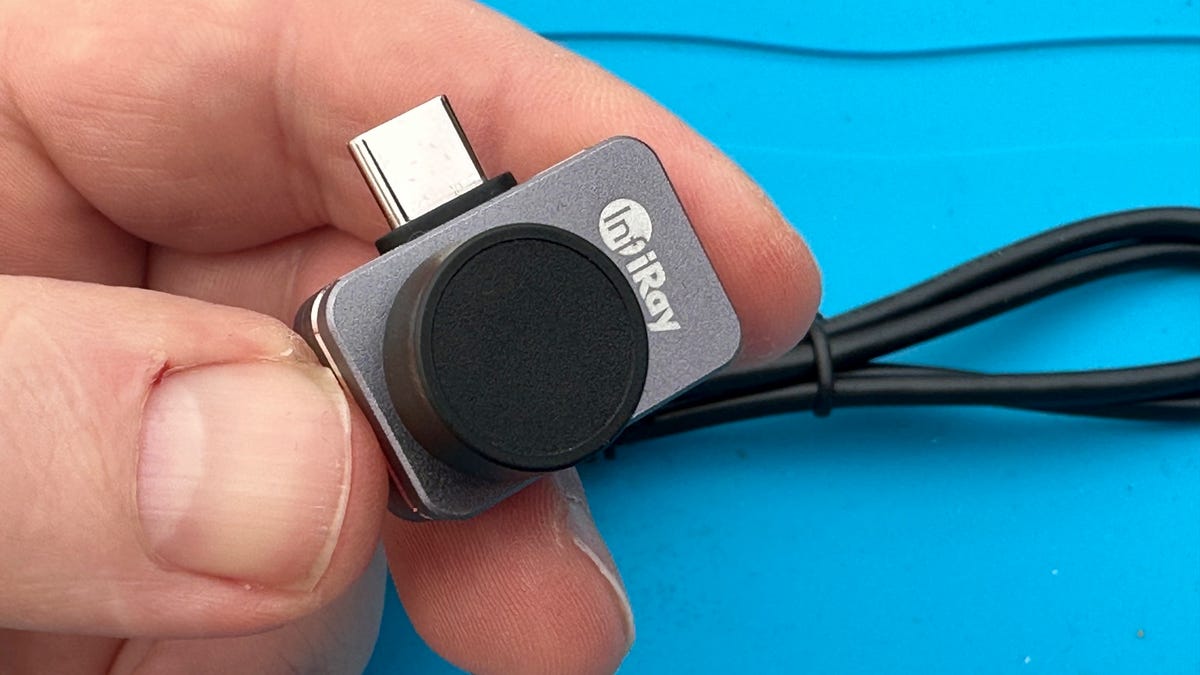
Image: Adrian Kingsley-Hughes/ZDNET.
The implementation of the InfiRay P2 Pro is simple: you have to download and install the P2 Pro application from the Google Play application store, launch this application, connect the camera to the USB-C port and voila!
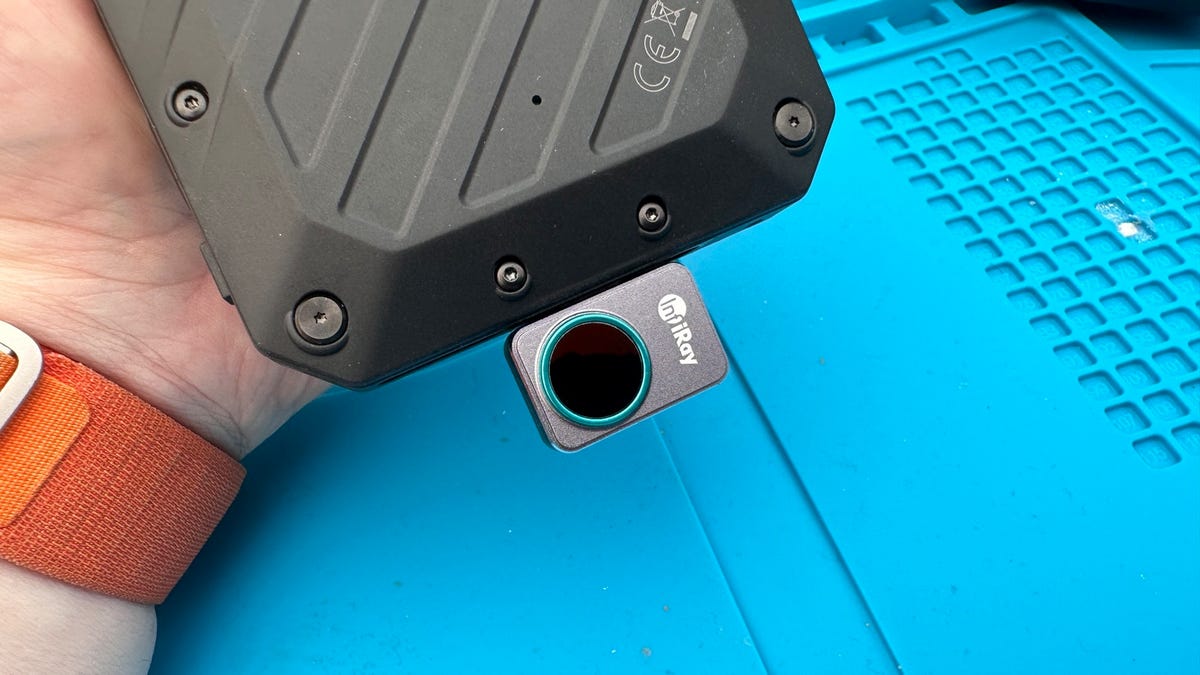
Image: Adrian Kingsley-Hughes/ZDNET.
If your Android smartphone is of the rugged type, you may have problems connecting the camera to the USB-C socket. Then get a USB-C extension adapter.
Now you can start exploring your surroundings.
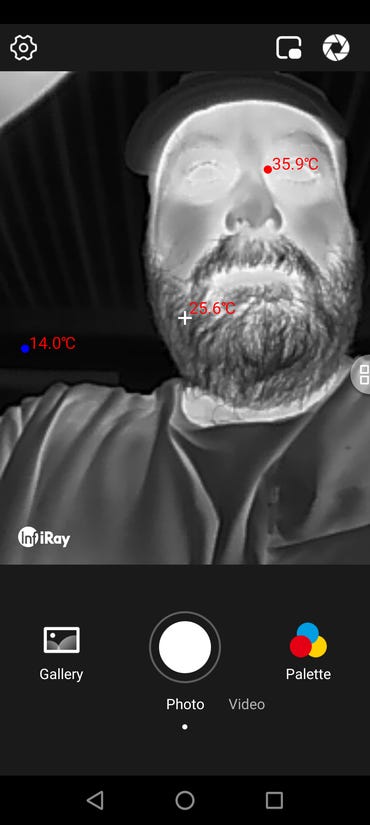
Image: Adrian Kingsley-Hughes/ZDNET.
A feature of the P2 Pro app that I really like is that in addition to the reticle (aiming poinr) in the center of the image, there are two more that detect the highest and lowest temperatures measured in the field.
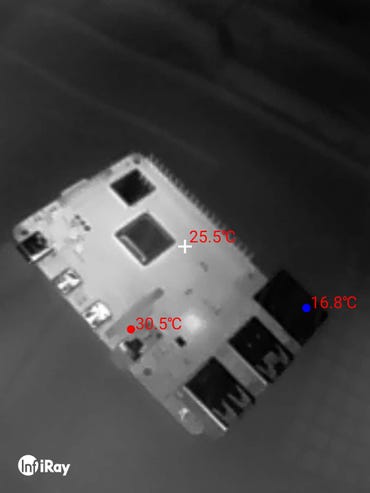
Image: Adrian Kingsley-Hughes/ZDNET.
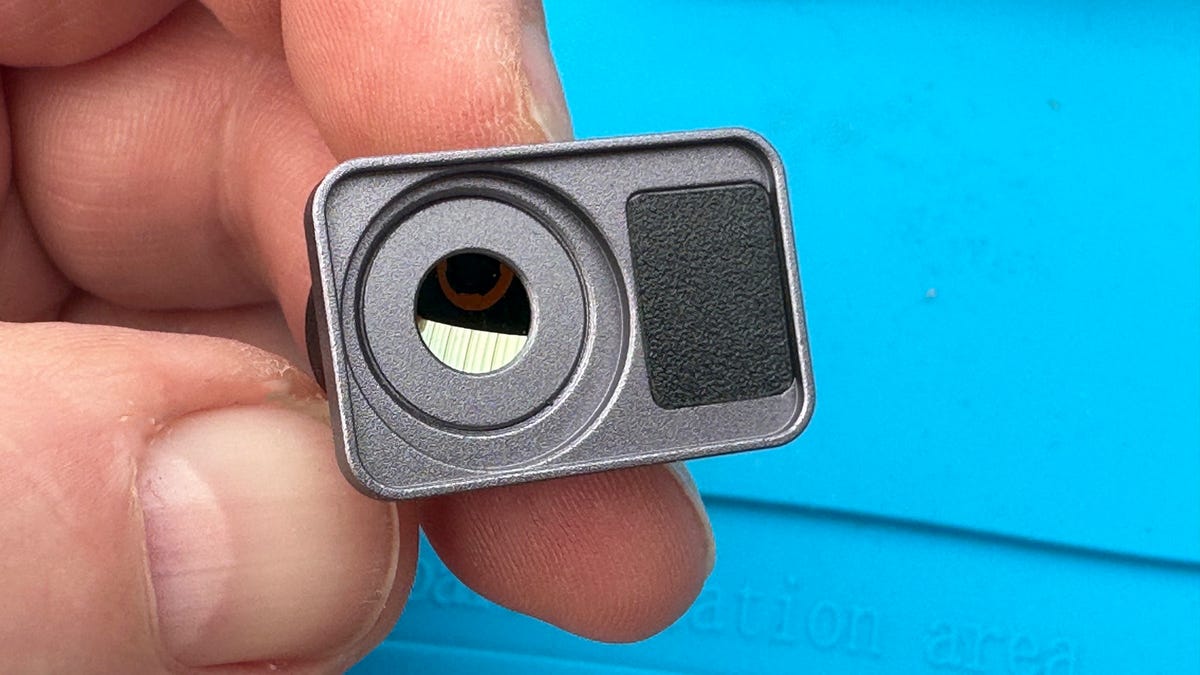
Image: Adrian Kingsley-Hughes/ZDNET.
By placing the macro lens on the front of the camera, you can get closer to what you’re looking at and appreciate more image detail.
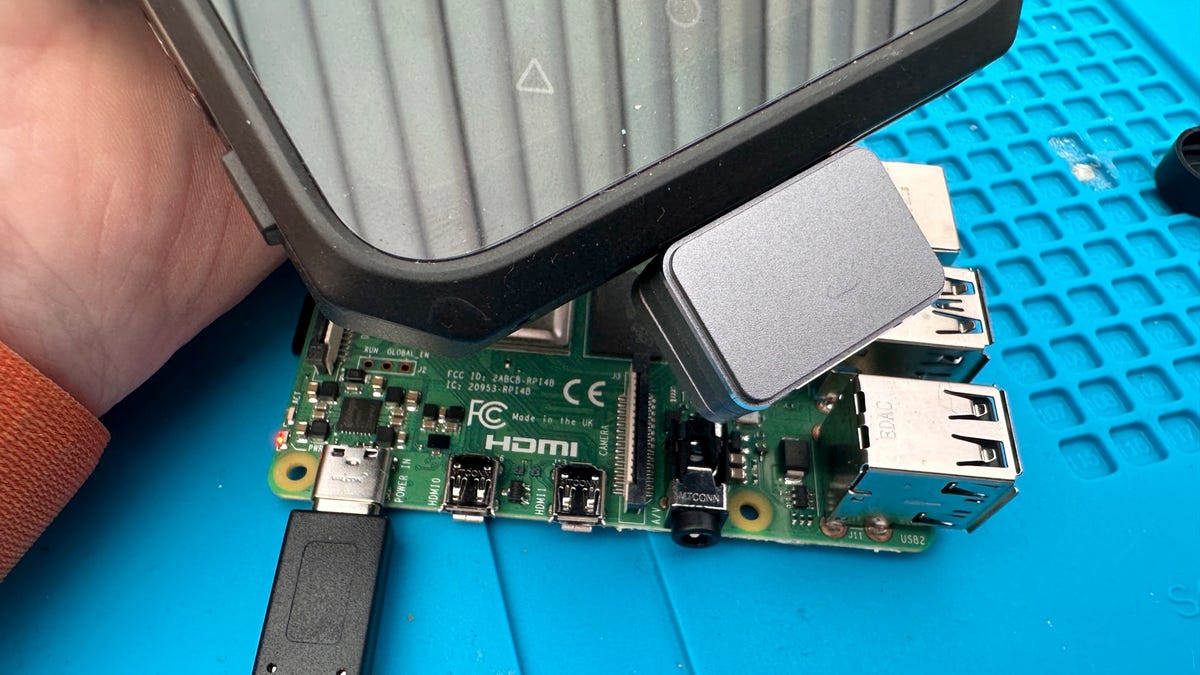
Image: Adrian Kingsley-Hughes/ZDNET.
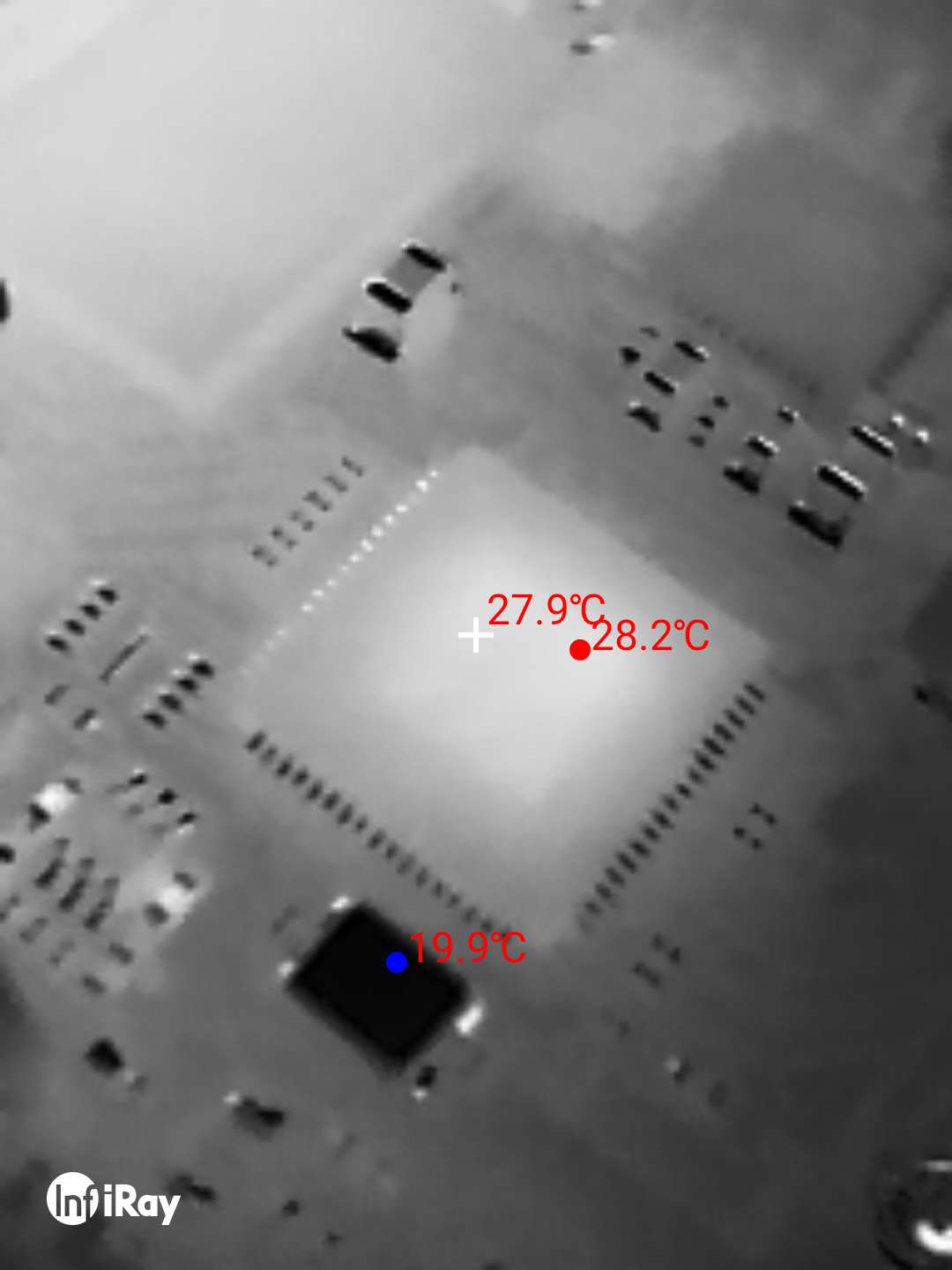
Image: Adrian Kingsley-Hughes/ZDNET.
The software offers plenty of customization options without being overloaded with unnecessary features.
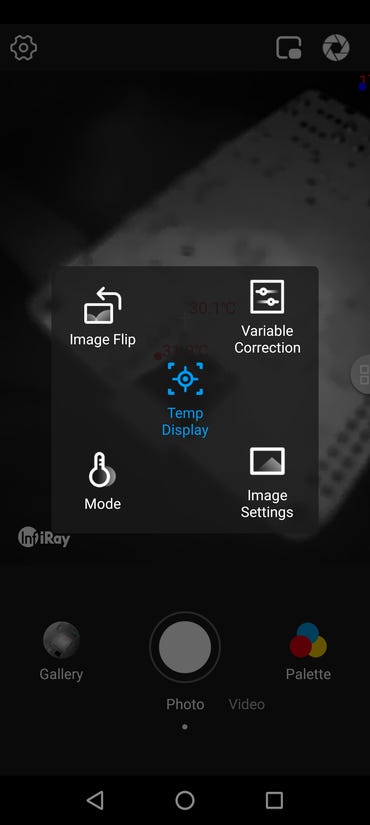
Image: Adrian Kingsley-Hughes/ZDNET.
For 340 euros, this thermal camera is great.
Not sure what you can do with a thermal camera? Here are some examples :
- find overheated electrical components (bad components are usually hotter);
- Diagnose all kinds of heating, ventilation and air conditioning problems, from windows letting in heat, to radiators not heating properly, to air conditioners not cooling;
- finding rechargeable batteries that overheat dangerously;
- find the radiator hoses under the floors;
- find overheated power cables;
- find problems with the cooling system of desktop or laptop computers;
- identify faulty brakes on cars;
My advice for using a thermal camera well: start observing with them things in normal working order, when they are not faulty (your radiators, your car’s brakes, electrical appliances, anything) and so you you can compare them when they are in a malfunctioning state.
I find the thermal camera so useful that I use it without thinking about it. Earlier, I wanted to know if an electrical device was powered. Instead of grabbing a multimeter, I used my thermal imaging camera to see if anything was getting hot inside. As soon as I saw components warming up, I ruled out a whole host of possible issues.
I’ve tested a number of thermal cameras – both standalone cameras and cameras that attach to smartphones: this one is the best. It’s small, the macro lens makes it super flexible, it’s fast and precise, and it doesn’t need to be recharged separately.
It is a fantastic additional accessory to any repair toolbox.
Source: ZDNet.com
